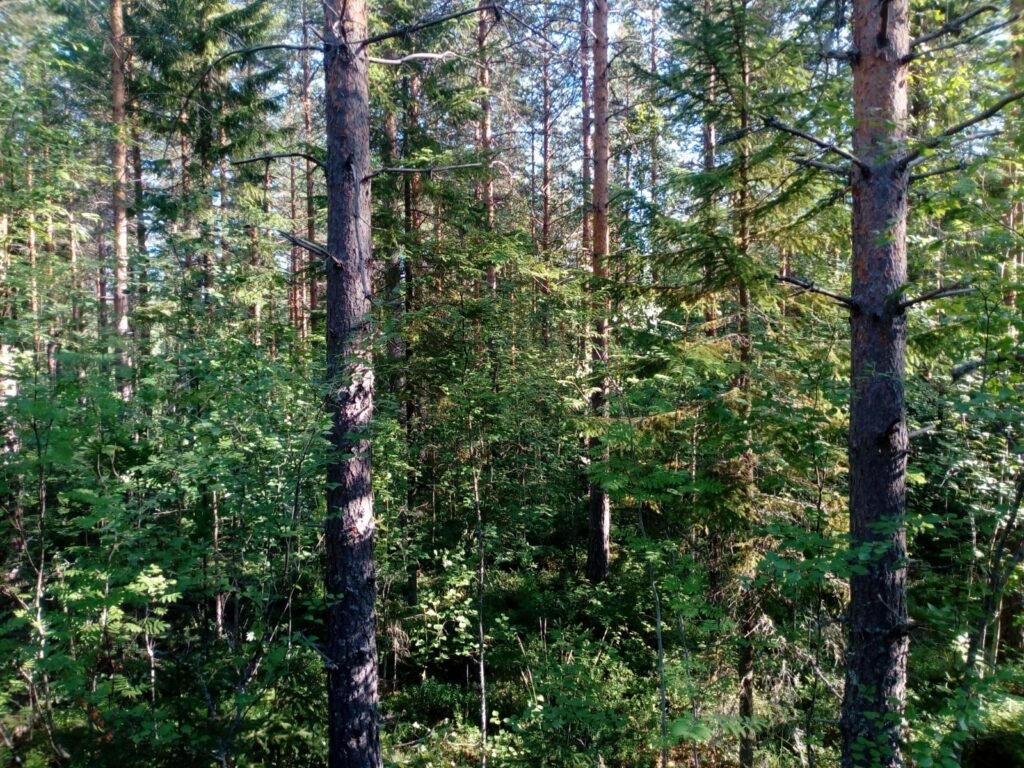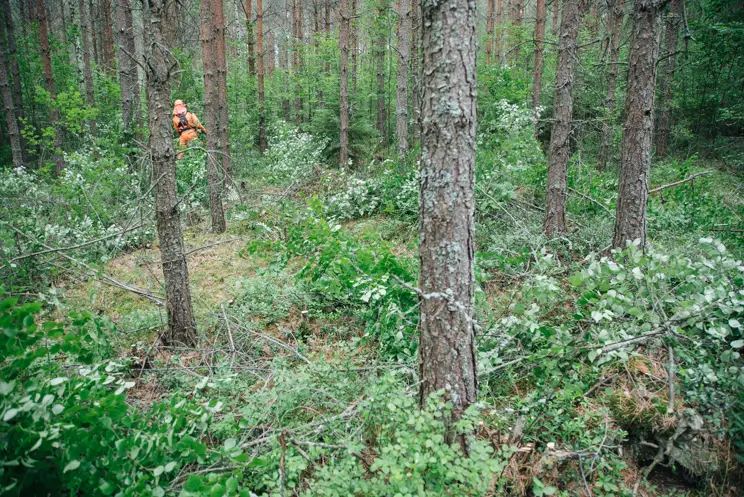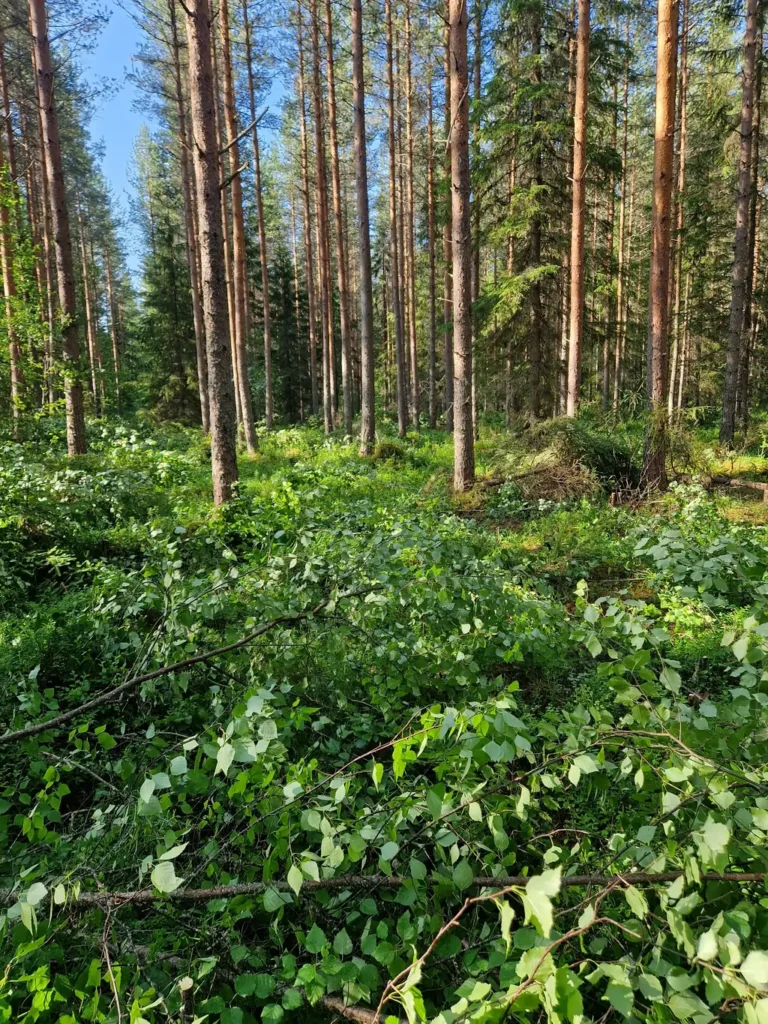Pre-harvest clearing on a logging site is in many ways a necessary measure that benefits the forest owner. It speeds up harvesting work and improves the quality of the result.
- Why should a logging site be cleared in advance?

A brush-covered forest is the harvester operator’s worst nightmare. Uncut undergrowth slows down and makes harvester work more difficult. The work must be done almost blind when the operator does not have enough visibility of the crop trees and terrain. The quality of the work then easily suffers. On a pre-cleared site the risk of harvesting damage decreases and the operator can correctly select the trees to be removed, leaving standing those that are best for the forest’s productivity. On regeneration areas, pre-clearing also facilitates subsequent regeneration work.
- On what kinds of sites is pre-clearing needed?
Generally on first-thinning sites on fertile soils where the undergrowth has not been cleared after seedling-stand thinning. Once the undergrowth has been cleared and the crop trees’ branches provide shading, further clearing is often not needed before harvesting.
“A brush-covered forest is the harvester operator’s worst nightmare.”
- Does pre-clearing apply only to first thinning?
In first thinnings pre-clearing is almost always necessary. In later thinnings, if the stand has been well tended, it is not always required. The crop trees’ shading keeps undergrowth from developing around them. Similarly, brushy regeneration areas should be cleared in advance, especially those compartments where harvesting residues will be collected for energy use.
- At what stage is pre-clearing done?

Preferably during the frost-free season, 1–3 growing seasons before harvesting, so that winter has time to press the cut undergrowth to the ground – but better late than never.
- What size undergrowth is removed?
All undergrowth with a diameter at breast height under 8 cm is removed. In the spaces between crop trees, undergrowth under 1.5 m high may be left if it does not obstruct the harvester operator’s visibility.
- Is all undergrowth over 1.5 m removed?
Within about one metre around the trees, everything is removed. In between, shrubby rowans, sallows, junipers, willows as well as small areas around rocks, wet depressions etc. can be left as game thickets and retention groups.
- How high are the stumps cut?
Within about one metre around the trees, all undergrowth is cut to a short stump under 10 cm. In between, stumps can be higher.
- What are the main pitfalls for a do-it-yourself forest owner?

Leaving the tallest undergrowth trees 4–8 cm in diameter standing as “wishful thinking trees” in the hope they will become merchantable timber. At the other extreme, unnecessarily clearing low brush that promotes biodiversity.
- How much does it cost to have pre-clearing done?
On sites where seedling stands have been managed according to recommendations, the cost per hectare starts at about €300. On unmanaged sites the cost can rise significantly higher. The expense is tax-deductible, giving about 30 % back as a tax benefit.
- Is Metka support available for pre-clearing?
Pre-clearing alone usually does not meet the conditions for Metka support, but combined with other measures on the same stand, applying for Metka support may be possible.